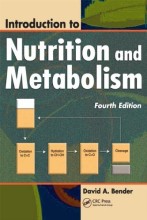NP8 Gluconeogenesis, PPP
12 important questions on NP8 Gluconeogenesis, PPP
Why/for what is there a pentose phosphate cycle?
NADPH
- You need NAPDH for fatty acid synthesis
High in tissues:
- liver
- mammary gland
- adipose
Glycolysis - isomerization --> fructose -6-phosphate with the pentose phosphate cycle
3 mol glucose of glucose-6-phosphate gives
- 6 mol NADPH
- 3 mol CO2
- 2 mol fructose 6-phosphate
- 1 mol glyceraldehyde-3-phosphate
What is the difference between PPP and glycolysis?
- 3 G-6-P -> 2 F-6-P + GA3P + 6 NADPH + 3 CO2
Glycolysis
- 2 G-6-P --> 2 F-6-P
- 1 G-6-P --> 2 mol GA3P - 1 ATP
- 1 mol GA3P for complete oxidation: + 3.5 (GA3P -> pyruvate) + 12.5 ATP = 16 ATP (+3 CO2)
- in total: 3 G-6-P -> 2 F-6-P + GA3P + 15 ATP (+ 3 CO2)
- Higher grades + faster learning
- Never study anything twice
- 100% sure, 100% understanding
What is the meaning of energetics of reverse reactions?
- energy invested in the forward reaction is released in the backward reaction
Substrate cycle (tourniquet principle; go in 'pay' / go out 'free')
- energy invested in the forward reaction is NOT released in the backward reaction
Energetics of glucose substrate cycling [the ATP difference]
overall -6
What are the costs of oxaloacetate mito membrane transport?
- oxaloacetate occurs in both the cytoplasm and the mitochondrion, but cannot pass the mitochondrial membrane
- to pass the membrane oxaloacetate is converted to malate (NADHm; 2.5 ATP) and back (NADHc; 1.5 ATP)
- the costs of oxaloacetate mito membrane transport, as substrate cycle, are 1 ATP
Glucose substrate cycling costs related to the level
- glucose -- 0
- glucose- 6P
- fructose - 1,6 diP
- PEP
- Pyruvate
![]()
energy loss (glucose --> level --> glucose) - X ATP
- glucose --> 0 ATP
- glucose- 6P --> -1 ATP
- fructose - 1,6 diP --> -2 ATP
- PEP --> -2 ATP
- Pyruvate --> -6 ATP
When is pyruvate converted into Acetyl-CoA or Oxaloacetate?
- High level of Acetyl-CoA: change to Oxaloacetate
- High AMP (so low ATP): stimulation of citric acid cycle condensation oxaloacetate + acetyl-CoA
- Low AMP (so high ATP): stimulation of gluconeogenesis oxaloacetate is converted to PEP; inhibition glycolysis
Glycolysis of lactate / lactic acid
- Pasteur effect" 15x increase in glucose utilisation
- Metabolic pathway by which glucose is converted to lactic acid (anaerobic respiration)
- oxygen is not used/needed in the process
- NADH + H+ + pyruvic acid --> lactic acid + NAD+
- prude 2 ATP/glucose molecule
Glycolysis: the anaerobic metabolism of glucose
Lactate in the muscle will go to the liver and will be converted back into glucose
muscle: glucose --> 2 ATP + 2 lactate
liver: 2 lactate + 8 ATP --> glucose
extra costs: anaerobic glycolysis as substrate cycle 6 ATP
8 ATP is derived from fatty acid oxidation in the liver -- Beta-ox fatty acids
Some tissues better adapt to anaerobic conditions, which ones and why/how
- RBCs do not contain mitochondria and ONLY use the lactic acid pathway
- Occurs in skeletal muscles and heart when ration of oxygen supply to oxygen need falls below critical level
- skeletal muscle
- normal daily occurrence
- does not harm muscle tissue
- cardiac muscle normally respires aerobically
- myocardial ischemia occurs under anaerobic conditions
Pasteur effect
what it the ration in ATP yield of aerobic and anaerobic breakdown of glucose?
The question on the page originate from the summary of the following study material:
- A unique study and practice tool
- Never study anything twice again
- Get the grades you hope for
- 100% sure, 100% understanding
































